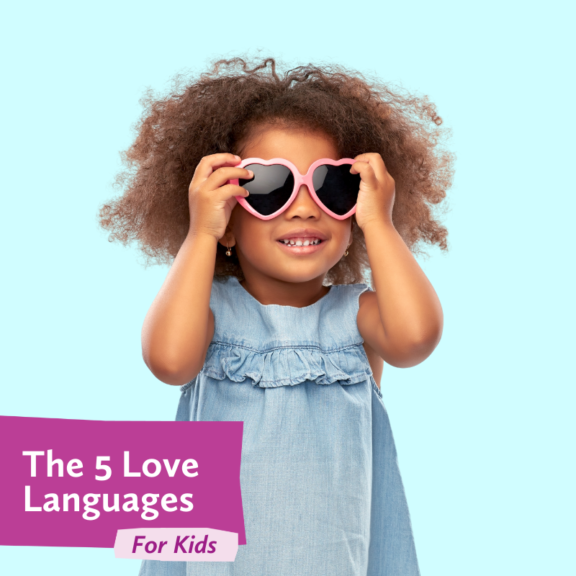
The 5 Love Languages
Kids Edition
We took the 5 love languages and found ways you can express love to the little ones in your life today and every day.
What are Love Languages?
Author Gary Chapman wrote the book, The Five Love Languages: How to Express Heartfelt Commitment to Your Mate, in 1992. Chapman identified five ways of expression to help romantic partners show love and appreciation in their relationships. Knowing your own and especially your loved one’s love languages strengthen your relationship. Many individuals have more than one, and often have different languages for expressing and receiving love to and from others.
The 5 Love Languages:
- Acts of Service: Doing helpful or supportive actions for your loved one
- Physical Touch: Being close to, touched, or embraced by your loved one
- Receiving Gifts: Giving thoughtful gifts or tokens to your loved one
- Quality Time: Spending meaningful and attentive time with your loved one
- Words of Affirmation: Speaking affectionate or supportive things to your loved one
Even though Gary initially applied his expressions to romantic relationships, people show friendly or familial love through these languages as well. Lead by the mission of supporting children and families, NewPath Child & Family Solutions has applied these five expressions of love to the relationship between child and parents, foster parents, and guardians.
Finding your Child’s Love Languages
Start by listening to how your child requests your love or attention:
- Acts of Service: “Can you help me clean up my toys?”
- Physical Touch: “Can I sit or cuddle with you?”
- Receiving Gifts: “I like when you add a special treat to my lunch!”
- Quality Time: “Please play with me”
- Words of Affirmation: “Look what I can do!”
Then observe how your child expresses love to you and others:
- Acts of Service: Helping with chores or cooking
- Physical Touch: Giving hugs, high-fives or cuddles
- Receiving Gifts: Gifting art projects or small tokens
- Quality Time: Asking to do things with you or wanting to be near you
- Words of Affirmation: Expressing their affection verbally
It is common for children to have more than one, and the infant-toddler age range benefit equally from all five love languages. In fact, simply being mindful of how often you express any form of love to your child can have a positive impact.
The 5 Love Languages for Children
Acts of Service
How to express love to your child through small acts of kindness:
- Take time to learn more about their interests and hobbies
- Help your child practice physical or musical activities
- Read your child a book before bedtime
- Make your child’s favorite meal
- Volunteer at your child’s school or care facility
Physical Touch
A few ways you can express love to your infant or toddler through touch:
- Skin-to-skin contact
- Hugs and kisses
- Wear your infant in a carrier
- Embrace and snuggle
- Tickle and play
A few ways you can express love to your school-aged child through touch:
- Hug your child before and after school
- Brush their hair
- Initiate snuggle time
- Hold hands or give high-fives
- Start a tickle fight
Receiving Gifts
Practice giving random gifts of love and not bribes or rewards:
- Add excitement to giving yearly school clothes or new shoes by wrapping them
- Make your child’s favorite food or snack
- Plan a treasure hunt
- Add an extra treat to your child’s lunch bag
- Gift “coupons” to create future opportunities for fun
Quality Time
How to make time to be together:
- Include your child in planning weekly meals or weekend activities
- Be present during car rides
- Ask specific, open-ended questions about their day
- Watch something together
- Schedule one-on-one “dates” with each child (if more than one)
Words of Affirmation
A few ways to effectively communicate your affection to your child:
- Acknowledge their little victories and successes
- Say “I love you” often
- Be specific when praising your child
- Sneak a love note in their lunchbox or backpack
- Tell them you are proud of them
Foster Children in Need of Your Love
There are currently about 16,000 Ohio children in the foster care system and only 6,000 foster parents available to care for them. Ohio’s foster youth need you now more than ever. NewPath provides intensive training and support that will prepare you to ignite hope and change futures every day. To get started as a Foster Parent or ask questions about getting started please contact our Foster Care Team with the form below.
Foster Care
"*" indicates required fields
